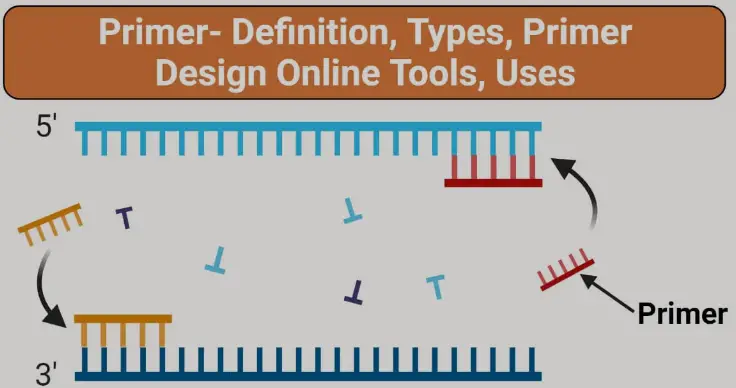Genetic regulation involves complex mechanisms, among which primers and promoters play crucial roles. Although these components are fundamental in the realms of molecular biology and genetics, they serve distinct purposes. Their differences are often nuanced but critical for the proper understanding of genetic expression and manipulation. This article seeks to clarify these differences and explore their unique functions.
Primers are short strands of nucleic acid that serve as starting points for DNA synthesis, primarily used in polymerase chain reactions (PCR) to amplify DNA segments. In contrast, promoters are DNA sequences located at the beginning of genes that signal to the cellular machinery where to start transcription. They are pivotal in dictating the when and how much a gene is expressed.
Understanding the structural and functional distinctions between primers and promoters is essential for anyone involved in genetic engineering, diagnostics, or research. These elements are manipulated to explore genetic functions, develop treatments, and understand biological processes at a molecular level.

Primer Basics
Definition of a Primer
A primer is a short strand of RNA or DNA that serves a pivotal role in DNA synthesis. Typically ranging from 18 to 22 nucleotides long, these sequences are synthetic and designed to anneal, or bind, to a specific sequence on the DNA template. By aligning precisely with the target DNA, primers set the stage for DNA polymerase to initiate the replication process.
Role in DNA Replication
In the context of DNA replication, primers are indispensable. Here’s how they function step-by-step:
- Binding: A primer attaches to a specific section on the DNA template, providing a free 3’-OH group that is crucial for the next step.
- Initiation: DNA polymerase attaches to this primer-template complex. This enzyme cannot start DNA synthesis from scratch and needs the primer’s 3’-OH group to add nucleotides.
- Elongation: Once initiated, DNA polymerase extends the primer, adding nucleotides complementary to the template strand, thereby synthesizing a new strand of DNA.
This process is fundamental in PCR (polymerase chain reaction), a technique used to amplify minimal segments of DNA into larger quantities for analysis.
Promoter Fundamentals
Definition of a Promoter
A promoter is a specific DNA sequence that lies upstream of a gene. Essential for transcription, it is recognized and bound by RNA polymerase and other regulatory proteins to initiate gene transcription. Unlike primers, promoters are not temporary; they are permanent parts of the genome, dictating the expression levels of the genes they regulate.
Function in Gene Expression
Promoters play a central role in gene expression with the following key functions:
- Initiation of Transcription: Promoters provide a specific binding site for RNA polymerase and transcription factors, signaling the start point for transcription.
- Regulation of Transcription: Depending on the promoter’s sequence and associated regulatory elements, it can increase or decrease the frequency of gene transcription, effectively controlling protein production in cells.
This regulation is vital for cellular function, allowing cells to respond to environmental changes and maintain homeostasis.
Key Differences
Structural Distinctions
Primers and promoters differ significantly in their structure:
- Primers are short, synthetic, and do not exist naturally within the genome. They are temporarily formed and used during DNA replication or PCR.
- Promoters, in contrast, are longer, naturally occurring DNA sequences that are integral to the genome’s structure.
Functional Disparities
The functional roles of primers and promoters also diverge distinctly:
- Primers are crucial for initiating DNA synthesis, a process necessary for DNA replication and PCR. They are tools used to elongate DNA strands under specific conditions.
- Promoters control the transcription of genes. Their activity affects how a cell functions and responds to its environment by regulating protein synthesis.
Biological Context
Primer in DNA Replication
Primers are fundamental to the process of DNA replication, which is crucial for cell division and the inheritance of genetic material. In both natural DNA replication in cells and in techniques such as PCR used in laboratories, the role of primers is essential. Here’s a detailed look at their function:
- Initiation: During DNA replication, primers signal the starting points for DNA synthesis. Enzymes called primases synthesize these short RNA sequences that are complementary to the DNA strand.
- Elongation: Once the primer is in place, DNA polymerase can attach and begin extending the new DNA strand by adding nucleotides.
This replication process is vital for genetic continuity and is mirrored in many biotechnological applications to amplify and study specific DNA sequences.
Promoter in Transcription Regulation
Promoters are critical in regulating gene expression, a process essential for cells to function and respond to their environment. The primary roles of promoters in transcription regulation include:
- Binding Sites: Promoters provide specific binding sites for RNA polymerase and other transcription factors.
- Expression Control: The presence and strength of a promoter determine the levels of gene expression, influencing how a gene’s information is converted into the functional structures within the cell.
Understanding promoter function helps scientists and medical professionals manipulate gene expression for research and therapeutic purposes.
Application in Biotechnology
Primers in PCR
The application of primers in PCR (Polymerase Chain Reaction) is a prime example of their utility in biotechnology:
- Target Identification: Primers are designed to match the specific segments of DNA that researchers wish to replicate.
- Amplification: Through cycles of heating and cooling, primers enable the selective amplification of a target DNA region, making it easier to study in detail.
PCR is a foundational tool in genetic testing, forensic analysis, and medical diagnostics, demonstrating the broad applications of primers in science.
Promoters in Genetic Engineering
In genetic engineering, promoters play a vital role in controlling gene expression in newly designed or modified organisms:
- Gene Regulation: Scientists can attach promoters to genes to control where, when, and how much a gene is expressed in the host organism.
- Synthetic Biology: Engineers use synthetic promoters to create novel biological pathways or to reprogram cells to perform specific functions.
This manipulation of promoters is crucial in developing genetically modified crops, therapeutic drugs, and even synthetic organisms.
Real-World Examples
Primers in Disease Diagnosis
Primers are extensively used in the diagnosis of diseases:
- Pathogen Detection: By creating primers that match the genetic material of viruses, bacteria, or other pathogens, clinicians can quickly identify diseases at the molecular level.
- Sensitivity and Specificity: The use of specific primers in PCR allows for the sensitive and accurate detection of low levels of pathogens, making it an invaluable tool in epidemiology and infectious disease control.
This application is particularly important in the rapid diagnosis of conditions like COVID-19, where timely and accurate testing is critical.
Promoters in Therapeutic Gene Expression
Promoters also find significant application in therapeutic gene expression, where they are used to control the effects of gene therapies:
- Controlled Therapy: Promoters ensure that therapeutic genes are only active in certain cells or under specific conditions, reducing side effects and increasing treatment efficacy.
- Targeted Treatment: By using promoters that respond to specific stimuli, gene therapies can be targeted to activate only in response to disease markers.
This precise control over gene expression is crucial in developing treatments for diseases like cancer, where targeted therapy can significantly improve patient outcomes.
FAQs
What is a Primer?
A primer is a short nucleic acid sequence that provides a starting point for DNA synthesis. It is essential for methods like PCR, where it binds to specific DNA segments to initiate replication.
How is a Promoter Defined?
A promoter is a specific DNA sequence that controls the transcription of a gene. It determines the start point and strength of gene expression, acting as a crucial regulatory element in gene function.
How Do Primers and Promoters Differ?
While both primers and promoters are integral to genetic functions, primers are used to initiate DNA synthesis, whereas promoters control the transcription of genes. Their roles and locations within the genetic material vary significantly.
Why are Promoters Important in Gene Expression?
Promoters are vital because they regulate the expression of genes. They ensure that genes are expressed at the right time and in the right amount, which is crucial for proper cellular function and development.
Can Primers Affect Gene Expression?
Primers themselves do not affect gene expression directly; they are tools used to amplify DNA segments for study or manipulation. However, their design and application in experiments can influence the outcomes of genetic research.
Conclusion
This discussion illuminates the critical differences and roles of primers and promoters within genetic systems. By understanding these components, researchers and biotechnologists can better manipulate genetic material for experiments, therapies, and diagnostics.
The insights gained from studying primers and promoters not only enhance our comprehension of biological mechanisms but also pave the way for advancements in medical and scientific research. The nuanced understanding of these elements is essential for the continued innovation and effectiveness of genetic technologies.

